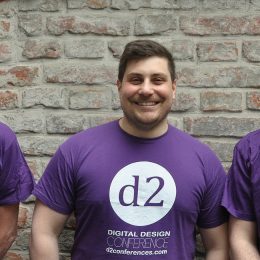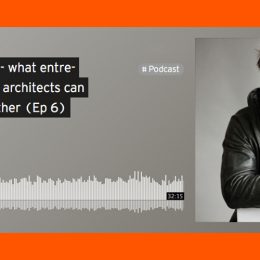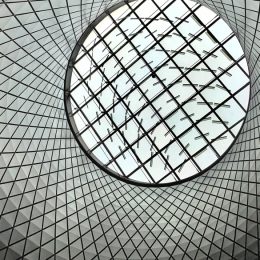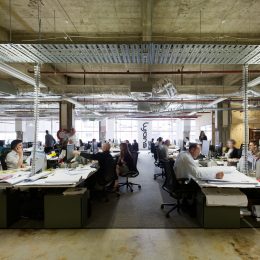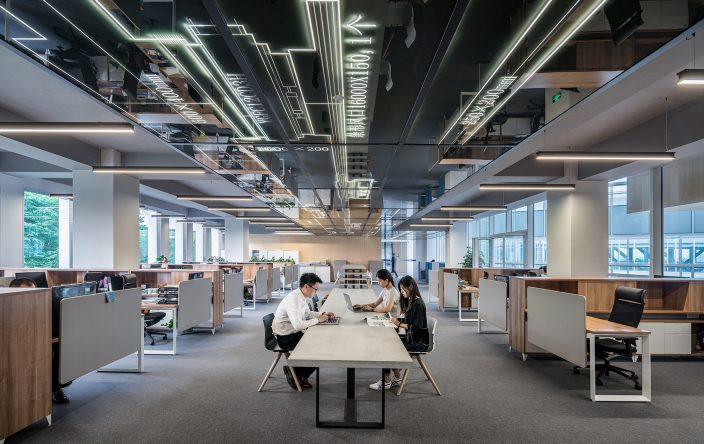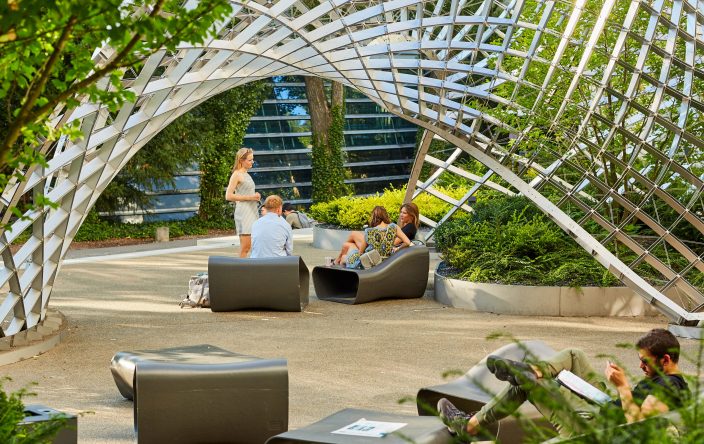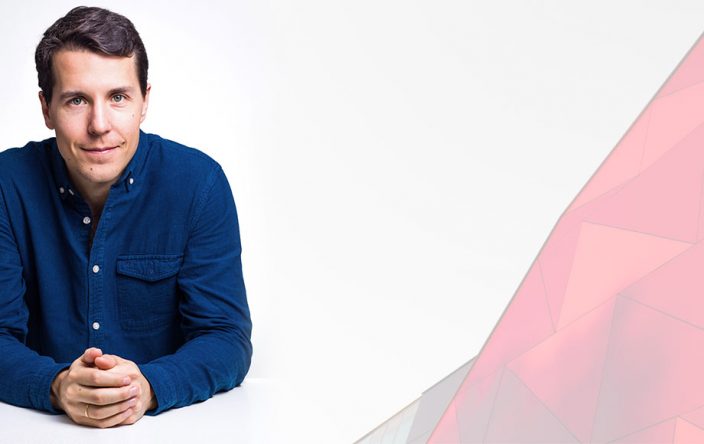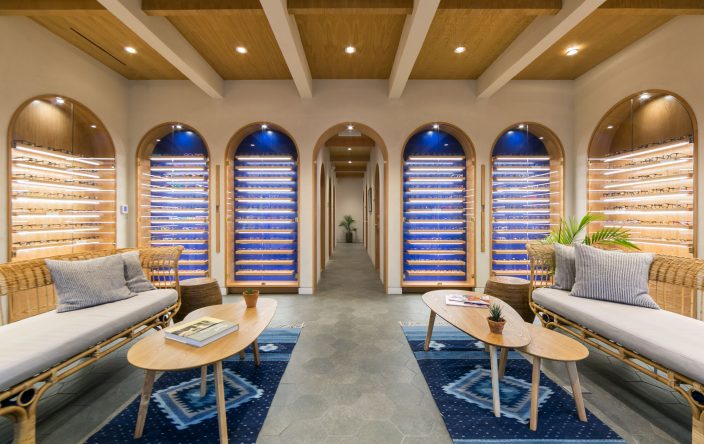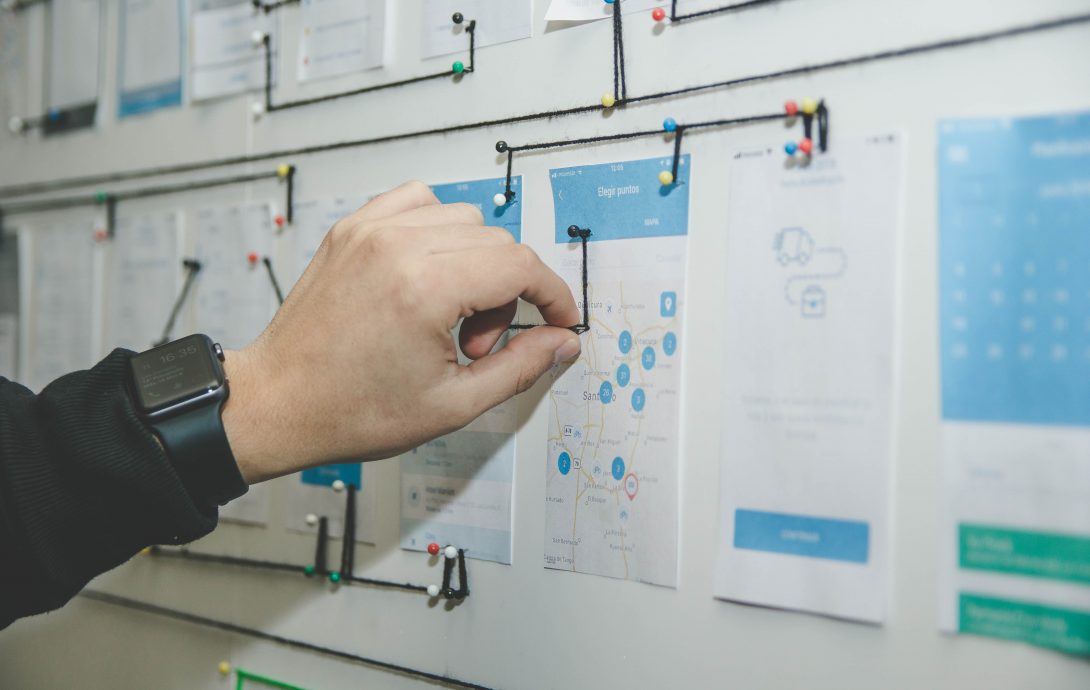
What Architecture Can Adopt from User Experience Design
Specific end users are traditionally removed from the architectural design process, while users are at the heart of designing new digital technologies. We explore how the architecture industry can learn from UX design to broaden its horizons, largely by integrating tech into their field of practice.
For the last decade, technology start-ups have sought to revolutionize nearly every working sector. Ambitious, growing tech companies are racing to find opportunities for what they call ‘disruption’ of the remaining traditional industries, from agriculture to medicine. It comes as no surprise that the building industry is ripe for disruption.
For the most part it has been practiced in the same way for centuries, and as a result it is renowned for being slow to adopt to new technologies. However, as public attention builds on the future of our built environment and its integration with new tech, architects have a responsibility to innovate. In the midst of this Digital Revolution, how can architects incorporate new ideas from the tech sector to better design progressive buildings and smarter, more sustainable cities?
Let’s first take a look at the guardians of design processes within the tech world. The user experience (UX) designer controls the design processes of products, apps and websites. There are several stories of professionals with architectural backgrounds transitioning to the field of UX design and working for startups to design their digital products and websites. This suggests that architectural thinking is transferrable and that there may be parallels within the design processes of both fields.
What are the similarities between user experience design and architectural design? Perhaps the best example can be found in the cross-appropriation of architectural and technological language in recent years. More and more often architects incorporate tech buzzwords like dynamic, hub, agile, incubator and scalable to communicate their intentions for contemporary design.
For years, the rapidly growing tech industry has created expressions and digital specializations like digital infrastructure, software architecture or architecture frameworks, perhaps to make computer engineering skills feel more concrete, relatable and connected to traditional industry practices. CO-Office, an emerging architecture firm based in New York City brands itself as “UX Designers for Space”.
In Amsterdam, esteemed architect Ben van Berkel of UNStudio launched a new company called UNSense, an ArchTech company which explores sensorial technologies for cities. KPF from New York City has launched a division called UI (Urban Interface for Cities), which uses urban data analytics for informed decision making in the design of buildings and cities.
It is interesting to see architecture companies using an interdisciplinary approach to explore these new fields and that they are also expanding their business models to incorporate new practice. To better understand the potential for architectural and UX design industry growth in this context, let’s take a closer look at UX design processes today.
What is User Experience Design?
The term user experience mainly refers to designing apps or websites, but it can also be applied to the use of physical products. A UX designer is concerned with the full scope of user interaction with a product, not only acquiring and integrating a product but also aspects of branding, design, usability and functionality. For this reason, UX is a major component of a device long before it is in a user’s hands.
Roman engineer Vitruvius is widely considered the first architect and designer, and many believe that he defined the criteria for user experience with the terms firmitas (strength), utilitas (utility) and venustas (beauty), which he applied to his architectural designs. While these tenets were only intended for the design of buildings at the time, today, as designers apply these criteria to designing various products, his core principles take on different meanings.
For Vitruvius, strength referred to stability and structural integrity, evident for example in a house that did not collapse. For UX, this term can be likened to the reliability and security of a digital product, ensuring that it does not crash and cannot be compromised. Regarding utility, or functionality, in architecture the debate of form vs. function has lasted for centuries.
Many agree with the Modernist Louis Sullivan that “form follows function“ and ultimately the success of a building or product relies on its usefulness more than its appearance. Utility incorporates accessibility, another principle which is shared between architecture and UX design. Both buildings and products should be inclusive and accessible for maximum public benefit and utility.
In addition to strength and utility, user experience is also influenced by beauty and emotional drivers. The importance of beauty and aesthetics varies from product to product. The beauty of a spreadsheet, for example, is usually considered secondary to its utility for organizing and conveying information. However, in fashion design, aesthetics and appearance are commonly foregrounded.
We can understand how the architectural tenets of Vitruvius are used in the tech sector, but what are the foundational design principles for UX design, and how can architects adopt these practices to improve the process of designing buildings?
UX Design vs. Architectural Design: A similar process?
Research and organization of information/space
The traditional architectural method of designing a building begins with research and information about the urban context, the spatial demands of the client, and the development of the building’s concept. A first step is often to structure the spatial demands of and relationships between different elements by working out a program. If we were to use a concert hall as an example, this would mean defining the size of the required spaces and the spatial relationships (i.e., the entrance area in relation to the concert hall, the backstage areas and the stage itself, the service areas, cafes, shops, and so on).
Architects would consider how visitors might enter the building, how the entrance should look, and how foot traffic should flow through the various sections of the hall. The programmatic setup of the building would therefore interact with and correspond to the urban design and the building’s form and position within the context of its location.
The starting point for UX Designers is similar: they ask why, how and what the product should be for its user. The design process for a digital product would start with a research phase to collect data, to understand the client’s fundamental requirements, to carry out user interviews and to establish the business targets and criteria for the product itself. Both the architect and UX designer therefore conduct research, gather data and try to understand the demands of their stakeholders to inform the design process.
Sketching and wireframing
Designing an app or website usually starts with wireframing the overall design concept. A UX designer places basic layout blocks to outline the product flow without going into detail on colors, fonts, or headlines. In architecture, the design process typically starts with initial sketches, placing the required spaces into floorplan arrangements and designing the overall layout of the spatial zones within the boundaries of the urban context.
The finer details of the building, such as the material of the facade and minor design elements are generally resolved later. While the output of the initial design phase for the UX designer is a wireframe layout; the initial output of the architect is likely a ground floor plan or an urban site plan.
Prototyping vs. model building
The design process of creating an app, product or website leads to a prototype; a minimum viable product (MVP) that can be used and tested. In architecture this prototype is the architectural model (physical or digital) which can be placed into the urban context in order to review the building’s design and its relation to neighboring buildings. The architect would design a physical model to different scales in order to check interior configurations and assess how light flows into the building or urban site. This could be further reviewed with a virtual 3D model or VR solution. In this way, architects apply the same methods of UX design for the physical world.
Iteration: An agile process as key difference
Both the UX and architectural design processes will eventually lead to a model prototype or MVP. However, the design process is only the first element of the project cycle; comparing the processes of constructing (or building, executing and realizing the concept) is quite different. After the design stage, an architectural project will progress to permitting, schematic design, construction drawings and finally construction.
This process, when drawn along a time axis, becomes less and less flexible. Many stakeholders can enter the design process at a single point and provide conflicting feedback on the developing strategy, bringing the project to a standstill. Once the design has been signed off by its stakeholders, the detailing phase for construction drawings can begin. At this stage, the design does not fundamentally change because other project parties including the MEP and structural engineers must integrate their work into the planning cycle.
In the digital world we find a more agile approach to a project, where the design phase is followed by a testing and iteration phase. The product or service is first tested so that user feedback can be collected. The product can then be improved and adapted based on the gathered user data, to improve product quality and ensure a better market fit.
One could argue that collecting user data is much more easily achieved in the digital world because data can be gathered in simpler way. Buildings are static prototypes and after they are finished they are, in effect, left alone with the user. The maintenance phase is not generally used for major building improvements. If you relate the iteration process of UX Design to the built environment it could mean that a building would be changed, adapted or improved based on the experiences of the building’s users after the building is finished.
This would rely on collecting user feedback within the asset management cycle and sharing the outcomes with the architect responsible for making design improvements. Altering a building after tenants have moved in is a challenging undertaking, but the data could also be used to inform and improve the next generation buildings of the same building type. Unfortunately, the asset management phase and the architect are usually not connected and rarely exchange ideas for design improvement unless there is a significant fault or failure.
In the Digital Revolution the physical and virtual worlds evolve together, cities adapt more quickly and tools are developed that can be applied to architectural design. Virtual and augmented reality solutions have become a common starting point for thinking about iterative processes that can be integrated into architectural design processes. Data gathering in cities might also improve the process of designing and constructing architecture with real-time iteration feedback from the user, i.e., pedestrian flow, Wi-Fi connection date, and traffic data.
How Can Architecture Learn from UX Design?
Approaching architectural design with an UX designer’s mindset would begin with a stronger focus on the end user. Gaining a better understanding of the end user from the outset would encourage a more holistic approach to designing the experience of using the building. A building is greater than the sum of its parts, more than a collection of bricks and mortar. Buildings often comprise an ecosystem or community of people who are using it.
Consider WeWork as an example, where members use the organization’s physical space as a service – a meeting point, office, co-working hub – but they also connect and relate in a digital way though WeWork’s digital network to the built environment.
The architect of a new building could start to think about how a user might experience it in the digital world, or how the user could be connected to it via an app or marketing material. The digitalization and interweaving of digital and physical spaces could also lead to new business opportunities. There is opportunity for architects to expand their service portfolio by offering design services, which the client could use for marketing the project during the leasing phase.
The technology exists for building facades to react to the local environment by collecting and displaying data which, in turn, could help inform other developing projects. But will these opportunities in technological innovation for buildings be developed by architects, or will tech-entrepreneurs take over in the future?
Buildings are unique prototypes in that they typically last for several decades, while a digital product has a far shorter lifespan. That said, as a network of spaces in the city for user consumption, buildings can become helpful technological tools for architects when designing solutions for the smart cities of our future.
As the role of the architect continues to evolve, the digital design sector will generate new opportunities for architectural thinkers, and as architects we should be ready to embrace these prospects for growth in our industry. —
Join our Newsletter
Get our best content on Architecture, Creative Strategies and Business. Delivered each week for free.

JOIN THE
ARCHIPRENEUR ACADEMY
- 9 Stage Studio Growth Roadmap
- Library of In-Depth Courses
- Checklists and Workbooks
- Quick Tips and Tutorials
- A Supportive Online Community


